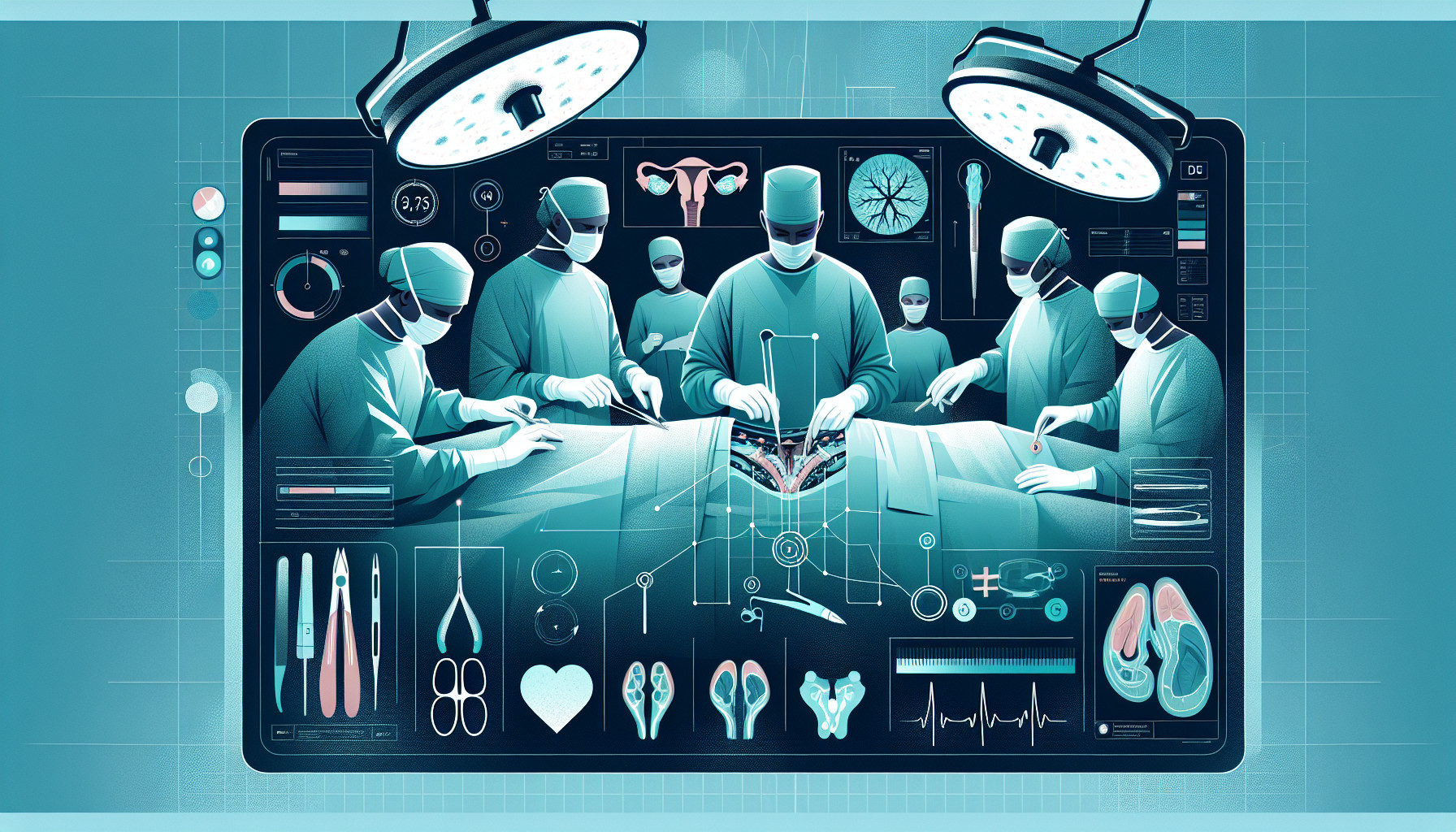Our Summary
This research paper updates a previous review that looks at the best surgical methods for fixing groin hernias, a common condition where an organ pushes through the body wall. The two methods compared are mesh repair (hernioplasty) and non-mesh repair (herniorrhaphy).
The study found that using mesh in the repair process probably reduces the risk of the hernia coming back, compared to non-mesh repair. It also found that injuries to the nerves, blood vessels, and organs were less common with mesh repair. However, infection was slightly more common with mesh repair.
There were also fewer cases of blood clots (haematoma) after surgery with mesh repair, but fluid-filled lumps under the skin (seromas) and swelling around the wound were more common. The effect on wound healing was uncertain.
The study found that mesh repair may lead to a shorter hospital stay and faster return to normal activities.
However, the results of this study are not completely certain due to variations in the results of the individual studies it looked at. The authors conclude that both mesh and non-mesh repairs are effective, but mesh repair is more commonly used, especially in wealthier countries. Non-mesh repair is often preferred in lower-income countries due to the lower cost and lack of availability of mesh materials.
FAQs
- What are the two methods of surgical repair for groin hernias discussed in the research paper?
- What are the potential benefits and drawbacks of using mesh in the repair process for groin hernias?
- Why might non-mesh repair be more commonly used in lower-income countries, according to the study?
Doctor’s Tip
A doctor might advise a patient undergoing testicular surgery to follow their post-operative care instructions carefully, including keeping the surgical site clean and dry, avoiding strenuous activities, and taking any prescribed pain medication as directed. They may also recommend wearing supportive underwear or a jockstrap to help reduce swelling and support the surgical site during healing. It’s important to follow up with the doctor for any concerns or complications that may arise after surgery.
Suitable For
Patients who are typically recommended testicular surgery include those with:
Testicular cancer: Surgery is often the first-line treatment for testicular cancer, especially for early-stage tumors. The type of surgery will depend on the stage and type of cancer.
Testicular torsion: This is a medical emergency where the spermatic cord becomes twisted, cutting off blood flow to the testicle. Surgery is needed to untwist the cord and restore blood flow to the testicle.
Testicular trauma: In cases of severe trauma to the testicles, surgery may be necessary to repair any damage and prevent long-term complications.
Hydrocele: This is a buildup of fluid around the testicle, causing swelling and discomfort. Surgery may be recommended to drain the fluid and prevent recurrence.
Varicocele: This is a condition where the veins in the scrotum become enlarged, leading to pain and infertility. Surgery may be recommended to repair the affected veins.
Testicular torsion: This is a condition where the testicle becomes twisted, cutting off blood flow and causing severe pain. Surgery is needed to untwist the testicle and prevent complications.
Epididymitis: This is inflammation of the epididymis, a coiled tube located behind the testicle. Surgery may be necessary to drain any abscesses or remove damaged tissue.
It is important for patients to consult with their healthcare provider to determine the best course of treatment for their specific condition.
Timeline
Before testicular surgery, a patient may experience symptoms such as pain, swelling, or a lump in the scrotum. They may undergo imaging tests such as ultrasound to confirm the diagnosis. The patient may also undergo blood tests to assess their overall health and fitness for surgery.
After testicular surgery, the patient may experience pain, swelling, and discomfort in the surgical area. They may be prescribed pain medication to manage these symptoms. The patient will be advised to rest and avoid strenuous activities for a period of time to allow for proper healing. Follow-up appointments with the surgeon may be scheduled to monitor the healing process and address any concerns or complications that may arise.
Overall, the timeline for a patient undergoing testicular surgery includes preoperative evaluation, the surgical procedure itself, postoperative recovery, and follow-up care to ensure optimal healing and outcomes.
What to Ask Your Doctor
Some questions a patient should ask their doctor about testicular surgery include:
- What are the potential risks and complications associated with testicular surgery?
- How long is the recovery period after testicular surgery?
- Will I need to stay in the hospital after the surgery, and if so, for how long?
- What type of anesthesia will be used during the surgery?
- How will the surgery affect my fertility and sexual function?
- Are there any alternative treatment options to surgery?
- Will I need to follow any specific post-operative care instructions or restrictions?
- How many times have you performed this type of surgery, and what is your success rate?
- What can I expect in terms of pain management after the surgery?
- Are there any long-term effects or complications that I should be aware of?
Reference
Authors: Lockhart K, Dunn D, Teo S, Ng JY, Dhillon M, Teo E, van Driel ML. Journal: Cochrane Database Syst Rev. 2018 Sep 13;9(9):CD011517. doi: 10.1002/14651858.CD011517.pub2. PMID: 30209805
